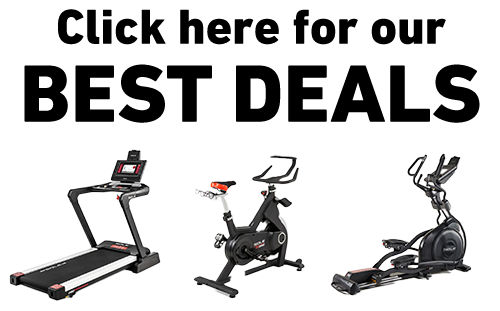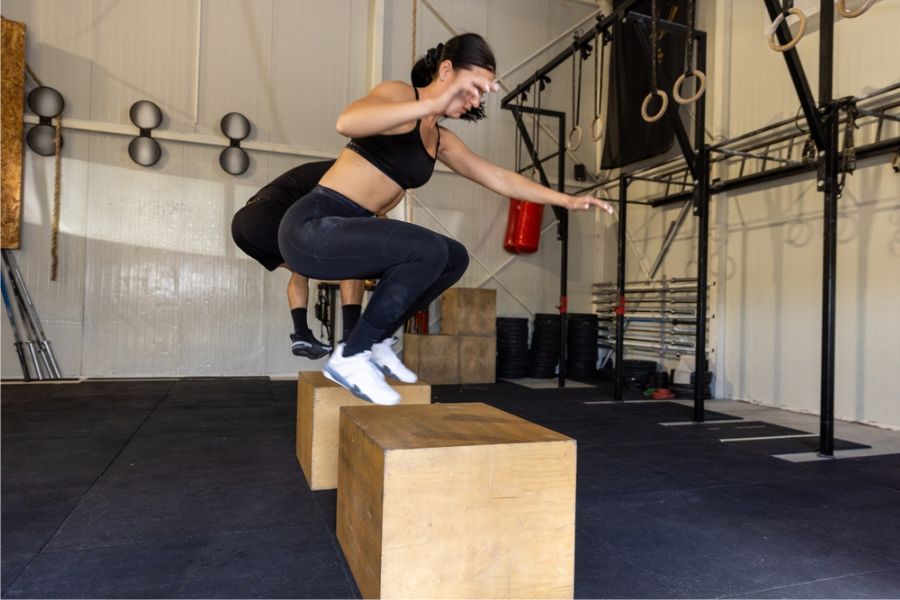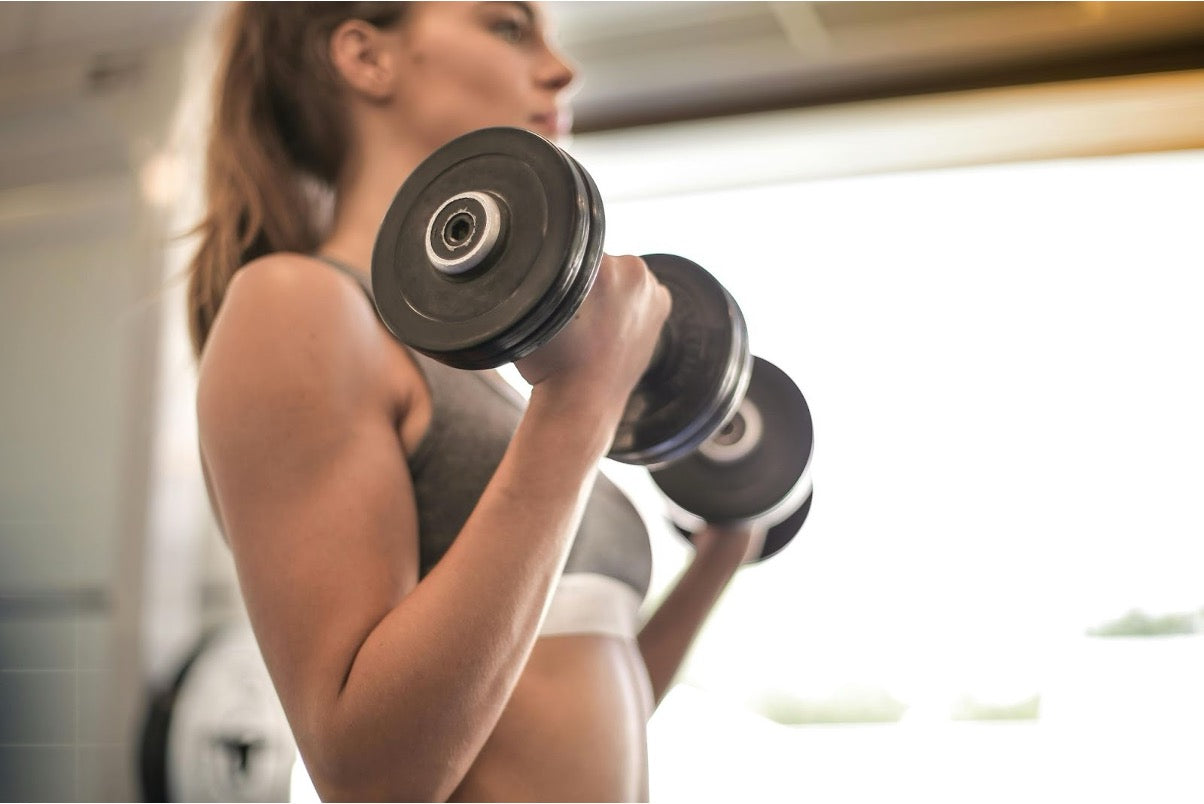Key Takeaways
- The Arnold Press engages all three deltoid heads simultaneously, while the Lateral Raise primarily targets the medial (side) deltoid for shoulder width.
- Arnold Presses are compound movements that also work triceps and upper chest, making them more efficient for overall upper body development.
- Lateral Raises allow for better isolation of the side deltoids with controlled loading, perfect for addressing muscular imbalances and building definition.
- For optimal shoulder development, incorporating both exercises into your routine provides complementary benefits rather than choosing one over the other.
- SOLE's adjustable dumbbells provide the precise weight control needed for both exercises, from heavy Arnold Press progressions to lighter isolation work with lateral raises.
Understanding the Fundamental Differences
When building impressive shoulders, two exercises consistently stand out: the Arnold Press and the Lateral Raise. Both target the deltoid muscles but in different ways, leading to unique results for your physique.
The Arnold Press, developed by Arnold Schwarzenegger, combines rotation with pressing to engage all three deltoid heads in one fluid movement. This compound exercise recruits multiple muscle groups simultaneously, creating a comprehensive shoulder workout.
By contrast, the Lateral Raise is an isolation exercise that primarily targets the medial (side) deltoid, helping create shoulder width and definition.
The primary distinction lies in their mechanics and muscle recruitment patterns. Arnold Presses are performed while rotating dumbbells through a pressing motion, requiring moderate to heavy weights and more overall body stability.
Lateral Raises involve lifting weights directly outward from your sides, typically using lighter weights with strict form to isolate the side delts.
|
Build Your Foundation with Premium-Grade Strength Equipment!
 Complete Your Home Gym:
Why Choose SOLE Strength: ✓ Heavy-duty steel construction with rust protection 30-Day Money-Back Guarantee: Love it or return it, no questions asked. |
The Arnold Press: Comprehensive Shoulder Development

The Arnold Press creates a unique stimulus for shoulder development through its rotational component, engaging all deltoid heads while also recruiting stabilizing muscles throughout the movement.
Proper Form and Execution
Mastering Arnold Press technique requires some attention to detail. Start seated on a bench with back support or standing with feet shoulder-width apart.
Hold dumbbells at shoulder level with palms facing your body. As you press upward, simultaneously rotate your wrists so your palms face forward at the top position.
Lower the weights with controlled movement, rotating back to the starting position. You’ll need to maintain continuous tension throughout the entire range of motion.
Common form mistakes include excessive arching of the lower back, using momentum to swing the weights up, and incomplete rotation during the movement. These errors reduce effectiveness and increase injury risk.
Focus on maintaining a neutral spine, controlling the weight throughout, and performing the rotation smoothly without jerking motions.
Muscles Worked: Beyond Just Deltoids
The Arnold Press is a comprehensive shoulder developer that engages all three deltoid heads simultaneously.
The anterior (front) deltoid activates during the initial press and rotation, the medial (side) deltoid works throughout the pressing motion, and the posterior (rear) deltoid engages during the rotational component.
In addition to the deltoids, the Arnold Press also recruits the triceps as secondary movers during the pressing phase, upper chest muscles during the rotational component, and various stabilizing muscles throughout the core and upper back.
Key Benefits of the Arnold Press
Arnold Presses have some major advantages:
- Arnold Presses provide greater time under tension compared to traditional shoulder presses due to the rotational component, promoting muscle development.
- They enhance shoulder stability by strengthening the rotator cuff muscles that support the shoulder joint.
- They improve shoulder mobility through the rotational pattern, which can help counteract the effects of prolonged sitting and computer work.
- Arnold Presses allow for progressive overload with heavier weights than isolation movements, making them excellent for strength development.
- They’re efficient, simultaneously training multiple muscle groups in a single exercise.
The Lateral Raise: Precision Isolation

Lateral Raises stand as the premier isolation exercise for developing shoulder width through precise medial deltoid targeting.
Step-by-Step Form Guide
Perfect lateral raise execution begins with the setup. Stand with feet shoulder-width apart, maintaining a slight bend in the knees and a neutral spine.
Hold dumbbells at your sides with a neutral grip and a slight bend in the elbows that should remain constant throughout the movement. This elbow position is critical—it should feel like your elbows are leading the movement.
Raise the weights outward to your sides in a controlled motion, leading with your elbows rather than your hands. Lift until your arms are parallel to the floor or slightly higher for maximum activation, then lower slowly, taking 2–3 seconds on the lowering portion.
The key to effectiveness is maintaining tension throughout; don't let the weights touch your sides at the bottom before beginning the next repetition.
Muscles Targeted: Focus on Medial Deltoids
While the Arnold Press works all three deltoid heads, the Lateral Raise primarily targets the medial (side) deltoid with exceptional precision. This muscle is responsible for shoulder width that creates the aesthetic V-taper physique.
Secondary muscles engaged include the anterior deltoid, upper traps, and serratus anterior which act as stabilizers during the movement.
The isolation nature of lateral raises makes them particularly effective for bringing up lagging side delts, which many people struggle to develop fully with compound movements alone.
Major Benefits of Lateral Raises
Like Arnold Presses, there’s some reasons you’ll want to do Lateral Raises:
- They’re unmatched in their ability to isolate and develop the medial deltoid, creating shoulder width.
- They place less stress on the rotator cuff compared to heavy pressing movements, making them generally safer for those with existing shoulder considerations when performed correctly.
- They can be performed with various equipment to provide different resistance profiles and keep training varied.
- They're excellent for correcting muscular imbalances between the front and side deltoids. Many training programs overemphasize pressing movements that develop the anterior deltoids disproportionately.
Regular lateral raises help balance shoulder development for both aesthetic and functional purposes.
Form Errors That Limit Results
The most detrimental form error with lateral raises is using momentum by swinging the weights up. This recruiting motion engages the trapezius muscles and reduces tension on the delts, essentially reducing the exercise's primary benefit. Keep the movement strict and controlled, even if it means using lighter weights.
Another common mistake is lifting the weights too high, well above parallel to the floor. This shifts the work from the medial deltoid to the upper traps and can contribute to shoulder stress. Aim to lift until arms are parallel to the floor or just slightly above for optimal medial deltoid activation.
Additionally, many lifters drop their hands inward during the movement, which reduces tension on the side delts. Maintain proper alignment from elbow to hand throughout the exercise.
Finally, watch for shrugging the shoulders during the movement, which shifts work to the traps instead of the deltoids.
Perfect Your Shoulder Training with SOLE's Precision Equipment

SOLE adjustable dumbbells provide the precise weight control and versatility essential for optimizing both compound shoulder development and targeted isolation work.
Effective shoulder training requires the ability to use different weight ranges for compound and isolation exercises. SOLE's SW180 Adjustable Dumbbells provide the precise control needed to optimize both Arnold Press and Lateral Raise training with 16 weight options from 5–80 pounds.
For Arnold Presses, the substantial weight range supports progressive overload as your strength develops, while the balanced weight distribution ensures stable handling during the complex rotational movement. The quick-adjust dial system allows efficient transitions between warm-up weights and working loads.
Lateral Raises demand precise weight selection for proper isolation, and SOLE's fine increments prevent the common mistake of using weights that are too heavy.
The SW116 Weight Bench enhances both exercises by providing stable support for seated variations, particularly valuable for Arnold Presses where back support helps maintain proper spinal alignment. The 9 adjustable positions accommodate different training angles and user heights.
The space-efficient design eliminates the need for extensive dumbbell racks while providing professional-grade versatility.
Frequently Asked Questions (FAQs)
Can I do Arnold Press and Lateral Raise on the same day?
Yes, you can perform both exercises on the same day, but strategic sequencing matters for optimal results. Since the Arnold Press is a compound movement requiring more energy and coordination, it's generally best to perform it first when your muscles are fresh. Follow with lateral raises to further isolate the medial deltoid.
Which exercise is better for addressing shoulder imbalances?
For correcting imbalances between the front and side deltoids, lateral raises are usually the superior choice. Many lifters develop overdominant anterior deltoids from frequent pressing exercises in both chest and shoulder workouts.
Lateral raises specifically target the often-neglected medial deltoid, helping to create balance across the shoulder complex. For left-to-right imbalances, both exercises can be effective when performed unilaterally, allowing focus on the weaker side.
How heavy should I go with each exercise?
Weight selection differs significantly between these exercises. For the Arnold Press, choose a weight that allows for 8–12 controlled repetitions with proper form and full rotation. As a compound movement, you can typically handle moderate weights that challenge you while maintaining technique.
For lateral raises, lighter weights are almost always better for proper isolation. Select dumbbells that allow you to perform 12–15 clean repetitions without using momentum. The focus should be on feeling the medial deltoid working through controlled range of motion.
How often should I include these exercises in my routine?
For optimal shoulder development, most intermediate lifters will benefit from training shoulders directly 1–2 times per week. If you follow a body part split routine, include both exercises in your dedicated shoulder day. For upper/lower splits or full-body routines, you might include Arnold Presses in one session and lateral raises in another to distribute the shoulder work throughout the week.
How do SOLE's adjustable dumbbells enhance both Arnold Press and Lateral Raise training?
SOLE SW180 Adjustable Dumbbells provide the precise weight control essential for both exercises. For Arnold Presses, the 16 weight options from 5–80 pounds allow proper progression as your strength develops, with quick adjustments between sets if needed. The balanced weight distribution ensures stable handling during the rotational component.







Leave a comment
This site is protected by hCaptcha and the hCaptcha Privacy Policy and Terms of Service apply.